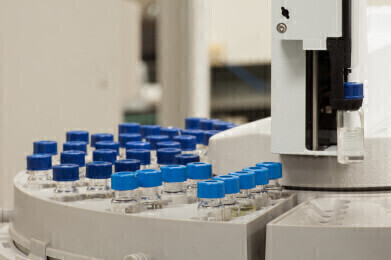GC, MDGC
Who and When was Gas Chromatography invented?
Jun 06 2023
Gas chromatography (GC) was invented by a team of researchers led by Martin and James at the University of Chicago in the early 1950s. Archer John Porter Martin, a British chemist, and Richard Laurence Millington Synge, an Australian-born British biochemist, are credited with the development of gas-liquid chromatography, which later became known as gas chromatography.
The concept of chromatography, a technique used to separate and analyse mixtures, was first introduced by Mikhail Tsvet, a Russian-Italian botanist, in 1900. Tsvet used a liquid-solid chromatographic method to separate plant pigments, and this technique became the basis for future chromatographic developments.
In the 1940s, Martin and Synge began their collaborative work on chromatography at the Wool Industries Research Association (WIRA) in England. They aimed to improve the separation efficiency of liquid chromatography. Their breakthrough came in 1944 when they published a paper introducing a new concept called 'partition chromatography', which involved the use of a liquid stationary phase coated on a solid support.
In the early 1950s, Martin moved to the University of Chicago, where he continued his work on chromatography. Along with his colleague Anthony T. James, they developed the first gas chromatograph. Gas chromatography differed from liquid chromatography by using a gaseous mobile phase instead of a liquid.
The first gas chromatograph built by Martin and James consisted of a glass column packed with a solid support, on which a liquid stationary phase was coated. The sample mixture was injected into the column, and a carrier gas, such as hydrogen or helium, was used to carry the sample components through the column. As the components interacted with the stationary phase, they were separated based on their differing affinities and retention times.
The early gas chromatographs had limited capabilities and faced several challenges, including the lack of suitable detectors for analyzing the separated components. However, advancements in technology and the development of new detectors, such as thermal conductivity detectors and flame ionisation detectors, significantly improved the method's applicability and sensitivity.
Over the years, gas chromatography has evolved and diversified into various specialised techniques, including capillary gas chromatography, gas-solid chromatography, and gas-liquid chromatography. It has become a widely used analytical tool in fields such as chemistry, biochemistry, environmental, petrochemical analysis, forensic science and pharmaceutical research.
The invention of gas chromatography by Martin and James revolutionised the field of analytical chemistry, allowing scientists to separate and analyse complex mixtures with high precision and efficiency. Their work laid the foundation for the development of numerous chromatographic techniques that continue to advance scientific research and analysis today.
Digital Edition
Chromatography Today - Buyers' Guide 2022
October 2023
In This Edition Modern & Practical Applications - Accelerating ADC Development with Mass Spectrometry - Implementing High-Resolution Ion Mobility into Peptide Mapping Workflows Chromatogr...
View all digital editions
Events
ACS National Meeting - Fall 2024
Aug 18 2024 Denver, CO, USA
Sep 04 2024 Chiba, Tokyo, Japan
Sep 04 2024 University of Warwick, Coventry, UK
Sep 10 2024 Rockville, MD, USA
Plastics Recycling World Expo Europe
Sep 11 2024 Brussels, Belgium














